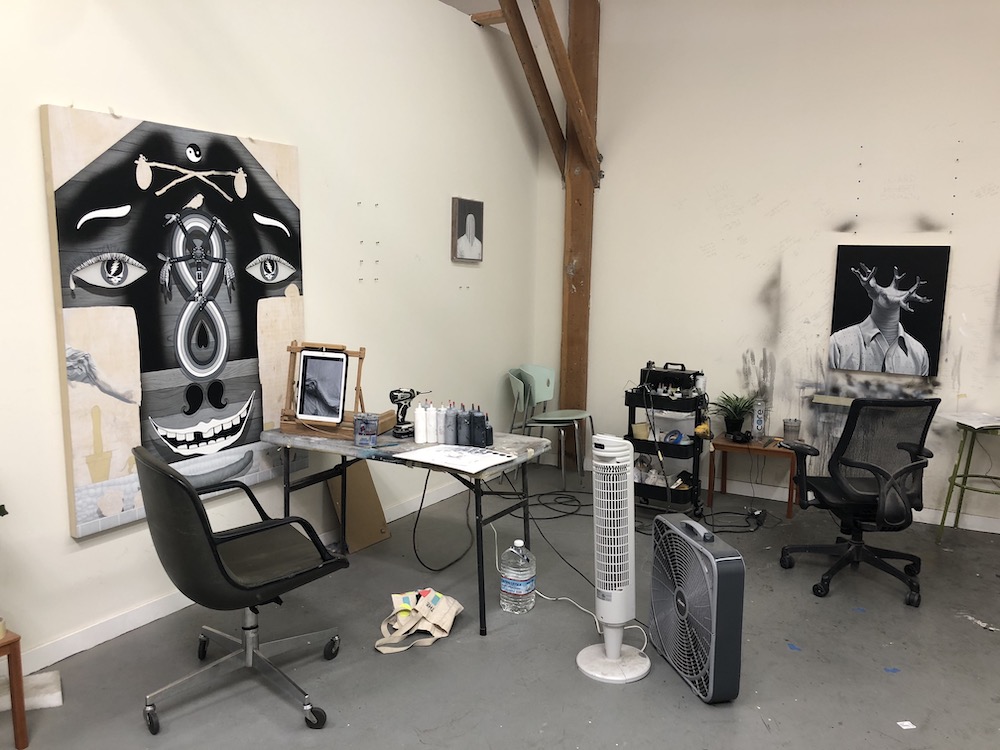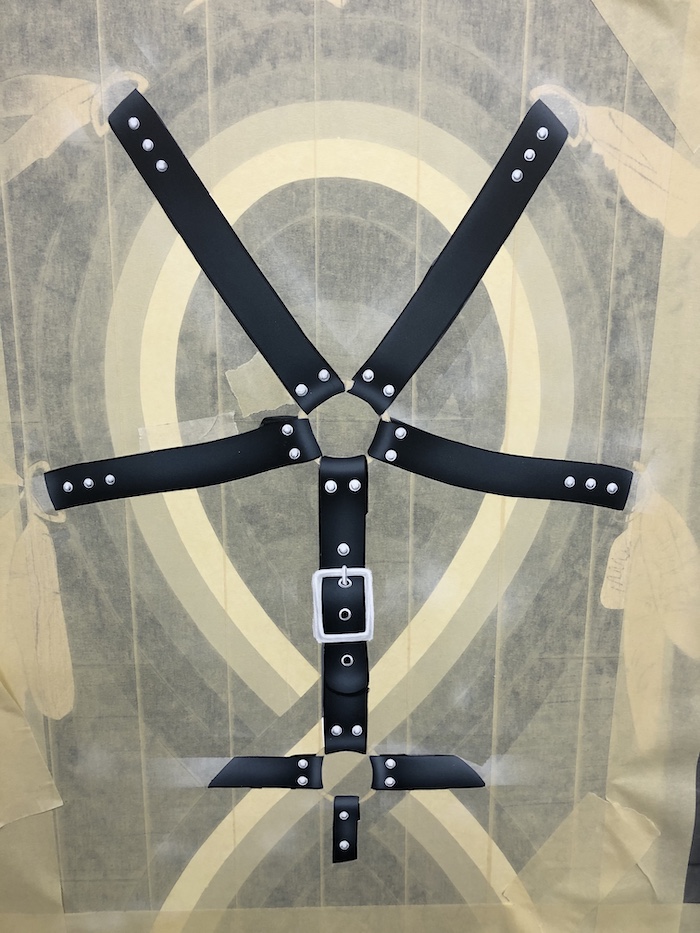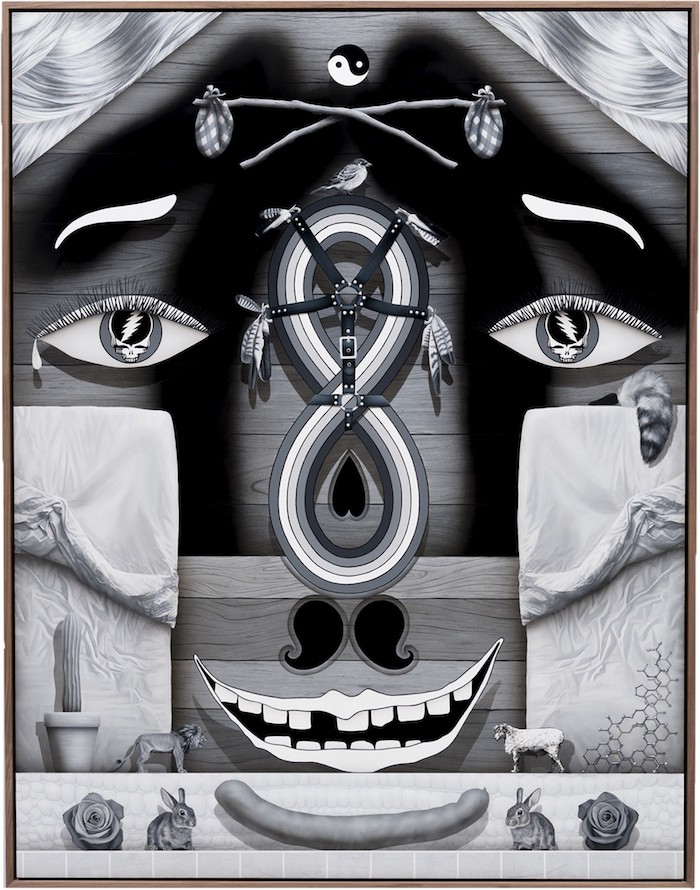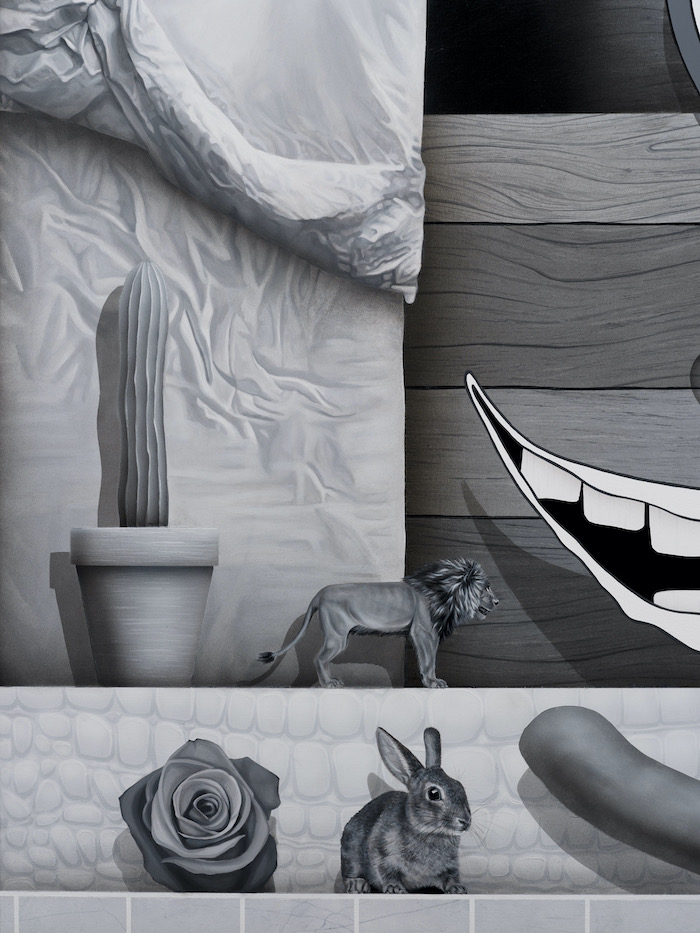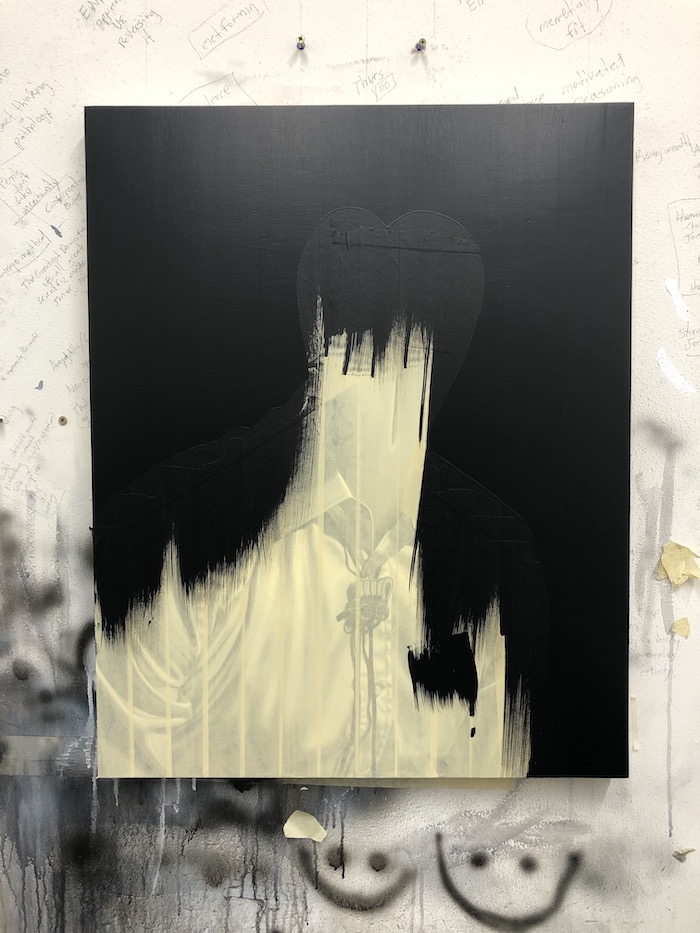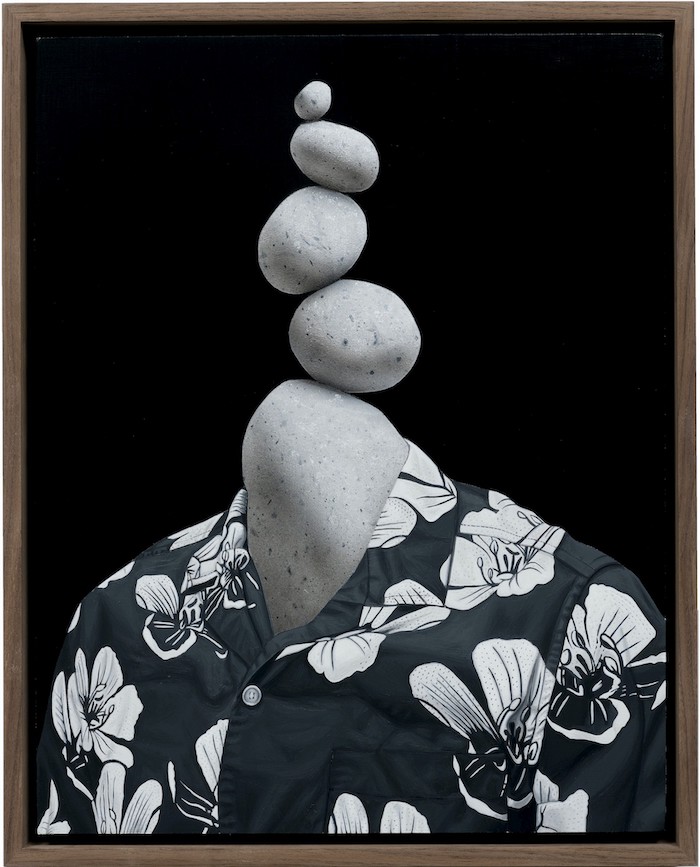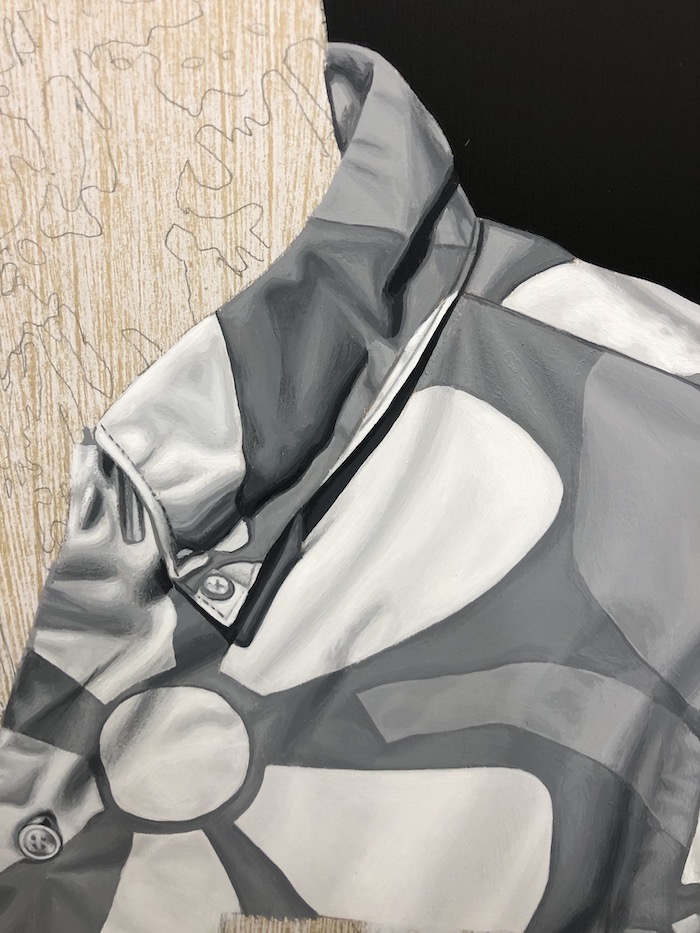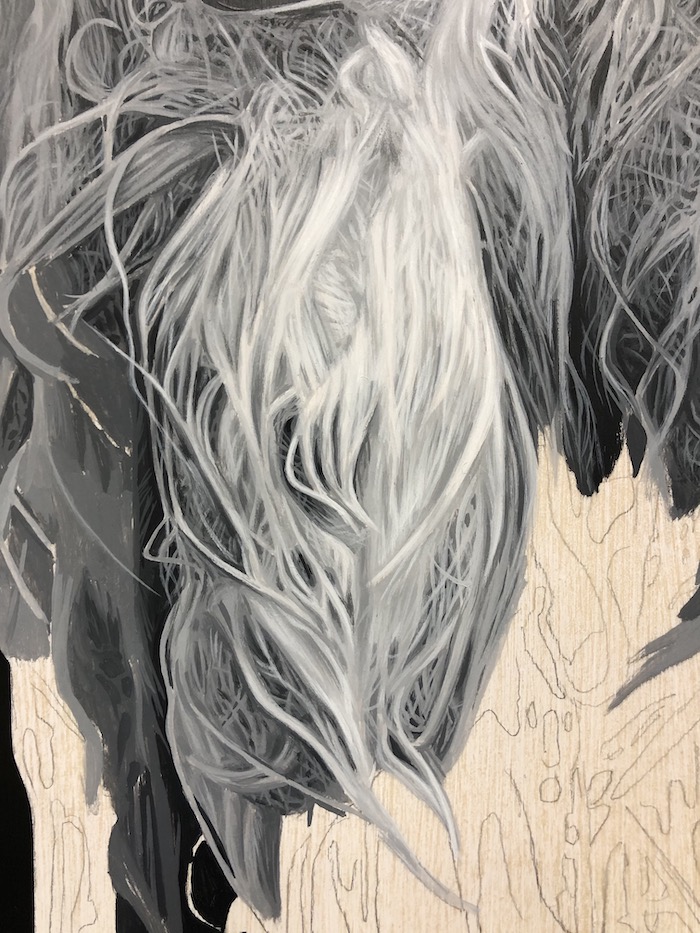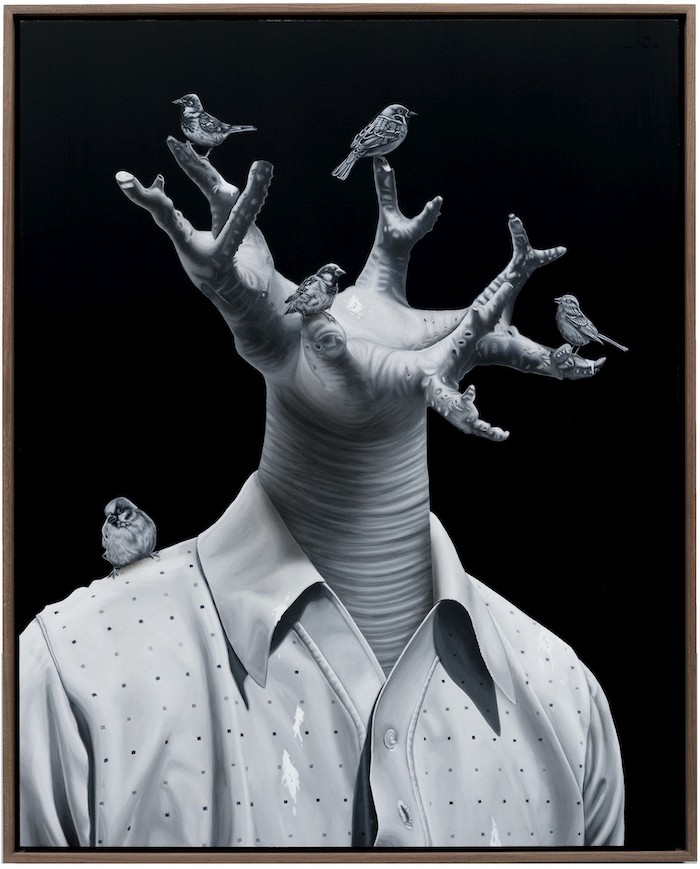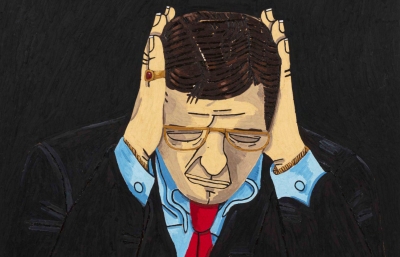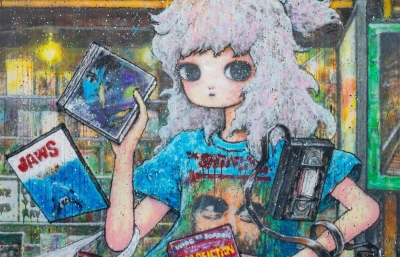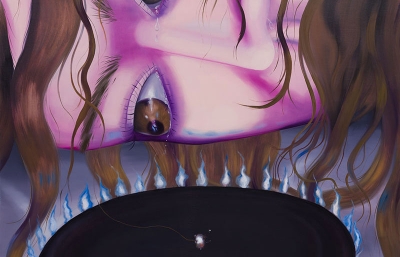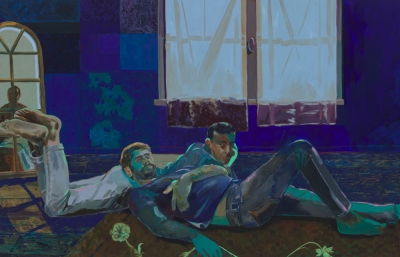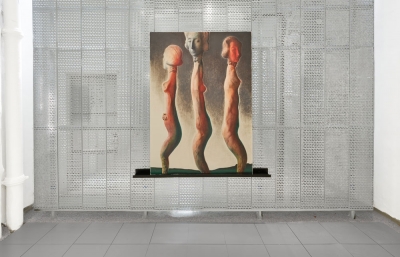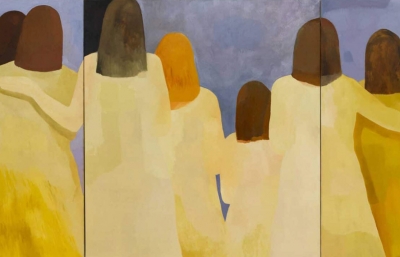When Brian Robertson refers to the title of his new show Lizard Brain, as “a nod to the subject matter I often employ“ in my self-portraits,” it’s clear that he is someone to engage in laughter or confession, or both! In that expression of primitive, usually male, instinct, the artist admits that cacti and succulents help portray his themes surrounding sexuality, insecurity and overcompensation. Following a successful show at Dallas Art Fair earlier this year, Robertson makes his solo debut October 22nd at Galerie Droste in Paris with a new series of works that will change the way you look at a prickly pear—or shop for produce. In addition, he presents a large painting that points in a whole, new direction.
At first glance, playful, a longer look at Robertson’s torsos evokes both bravado and vulnerability. Broad shoulders thrust forward or slump in slight defeat, inhabiting rolled sleeved, end-of-the day dress shirts. But it’s not Cris Hemsworth, it’s Robertson in the form of the aerole of a cactus plant, prickly, defense, aggressive, creating the narrative of man in struggling, and sometimes succeeding, in the environment. "Lizard Brain is a term I use/used to refer to the more primitive parts of the brain, specifically the Amygdala which regulates emotional response, and the Limbic system in general. The structure of the brain is such that the neocortex and other areas charged with higher reasoning can be completely hijacked by this evolutionarily older system and we can become addicted to the hormones produced from certain emotional states. Our minds are highly programmable and marketing professionals, media executives, politicians, the porn industry and everyone else with an interest in keeping your brain pumped full of dopamine in order to hold your attention knows it and is using it to their advantage. The proliferation of media and the financial models associated with it mean this both willful and un-willing coercion had become ubiquitous and seems to be causing a general degradation in our sense-making capabilities. I am of course not immune to any of this so I like to use "self-portraiture" as a way of reflecting and commenting on greater social phenomena writ-large. In this show, I'm using objects and symbols to tell a story about my own lizard brain, albeit in a slightly encrypted way, but with any luck, some other folks might relate."
The elements he uses in his work are strongly informed by his surroundings, both physically and mentally. By contrasting cacti or succulents as recurring elements against the finely rendered clothing items, he reveals the dynamics between wild, untamed nature, and human existence, also obvious in the Shit Post piece in which a pair sparrows rest on a subject's head (tree trunk), leaving their marks on the smooth shirt underneath. Another piece, Holding Still, captures exquisite quiet as the subject balances a pile of stones that form a head-like structure. The delicate structure needed to steady the cairn is juxtaposed against a lively floral Hawaiian shirt. With a singular reference, the artist responds to life. A monochrome color palette creates an almost timeless universality. "It is both easier and more difficult to work monochromatically," the artist tells us about this aspect of his work. "From a technical standpoint, you of course don't have to worry about the complexities of color mixing and color harmonies/relationships but there's a different set of problems that arise. Without color, value and composition become everything and the organization of the picture plane becomes paramount. With color, there comes more of a freedom to infuse emotion, energy, a hierarchy of importance within a work, etc. all by color choice. This ability is not absent in black & white work but it sets an interesting limitation and forces you to approach certain problems in a different way. I prefer to work within this space precisely because of its limitations and because of the unifying and stoic sensibilities black and white images can produce. Things in black & white feel more honest to me, and honesty is what I'm going for."
Along with a series of archetypal portraits, the artist prepared a large piece entitled Dirtbag Dreamcatcher, where selected objects and symbols form an assembled kind of portrait, a piece that shows his evolution as a painter. Cacti join Grateful Dead logos, and feathered bondage leather belts within a structure of chemical elements. Robertson admits that the meaning can change over the course of time, but "Dirtbag Dreamcatcher” is imagined as “ more of a mental-landscape akin to the work of Roberto Matta but busy with the iconography and freneticism of the online brain." Unlike the bronze busts of conquerers and kings, Robertson offers meek and mighty struggles in a new kind of portrait. —Sasha Bogojev



